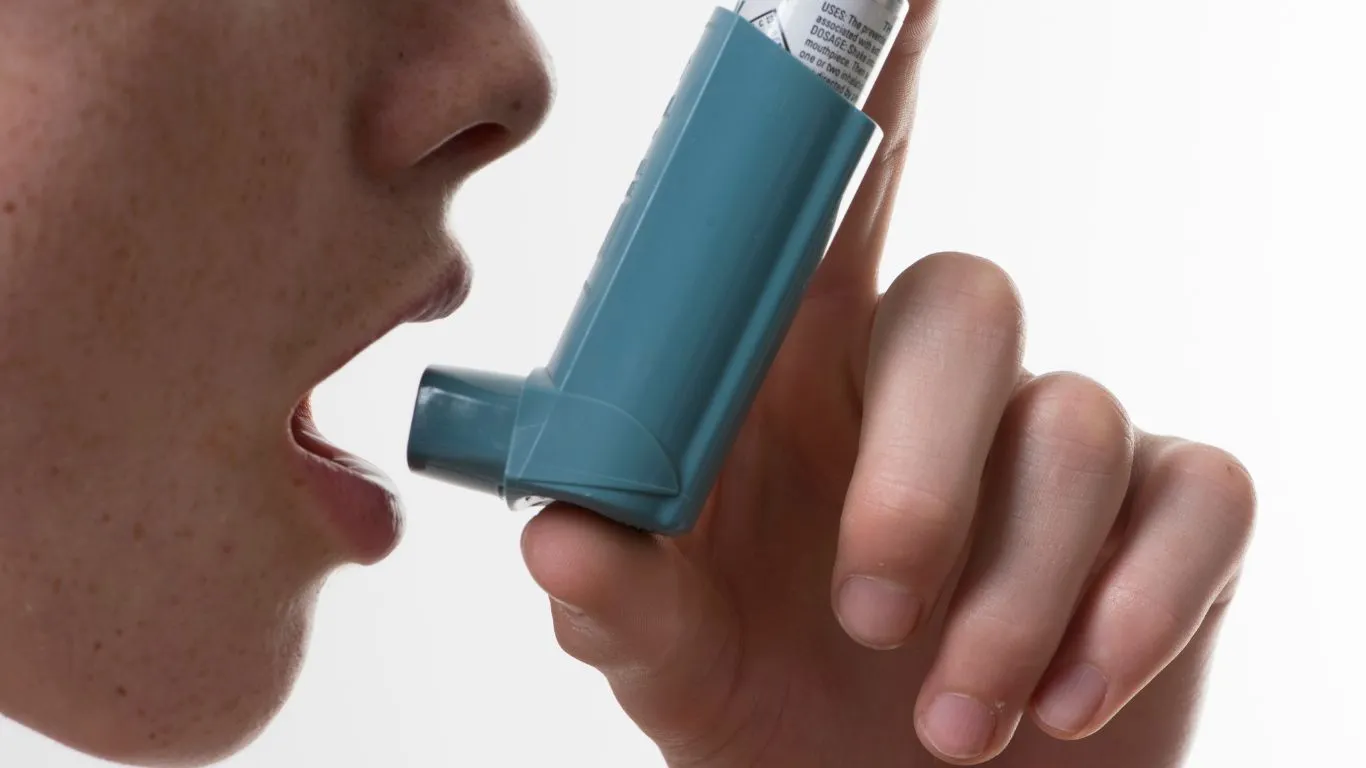How to Manage Asthma in Humid Environments: Proven Tips for Better Control
Managing asthma in humid environments is one of the most challenging aspects of dealing with this chronic condition. As a pulmonary nurse, I’ve seen firsthand how humidity can trigger asthma attacks and worsen symptoms. For those who live in humid areas or have to travel to these regions, understanding how to manage asthma in these conditions is crucial for maintaining control over your respiratory health. Whether you’re dealing with a sudden increase in humidity or it’s a constant environmental factor, knowing how to protect yourself can make all the difference.
Why Humidity Affects Asthma: Understanding the Link

Humidity plays a significant role in asthma management. When the air is thick with moisture, it can become harder to breathe, and your lungs are more likely to react. You might have noticed that your asthma symptoms seem to worsen on hot, muggy days, or in places where the air feels “heavy” with moisture. This is because humidity can exacerbate the narrowing of your airways, leading to difficulty breathing, wheezing, and coughing. The increased moisture in the air can also make allergens, like mold and dust mites, thrive more easily, further triggering asthma flare-ups.
As a nurse, I’ve helped countless patients navigate these challenges. One thing I always stress is that asthma doesn’t just mean using your inhaler during an attack; it’s about understanding your environment and making conscious decisions about how to protect your respiratory health day-to-day. In humid environments, the more proactive you are, the less likely you’ll be caught off guard when symptoms start to worsen.
Effective Strategies to Manage Asthma in Humid Environments
1. Control Indoor Humidity Levels

One of the most effective ways to combat humidity and its effects on asthma is to control the moisture in your indoor environment. Keeping your home cool and dry can significantly reduce asthma triggers. There are a few ways to do this:
- Use a dehumidifier: This can be a game-changer for asthma sufferers. Dehumidifiers help remove excess moisture from the air, making it easier to breathe and reducing the growth of mold and dust mites, both of which are common asthma triggers.
- Keep air conditioning on: Air conditioning not only cools the air but also helps to reduce humidity. This is especially important during the hotter months when humidity levels tend to be higher.
- Ventilate your home: Proper ventilation is key to reducing moisture levels indoors. Use exhaust fans in areas like the kitchen and bathroom, and open windows when possible to allow air circulation.
I’ve worked with several patients who found that keeping their homes at the right humidity level was one of the most effective ways to manage their asthma. It’s not always about avoiding humidity but rather controlling where and when you’re exposed to it.
2. Monitor the Weather

If you live in an area with fluctuating weather patterns, keeping an eye on the forecast can give you a heads-up about high humidity levels. It’s all about being prepared. If you know a hot and humid day is coming, you can take steps to minimize your exposure and avoid triggering an asthma attack. Here are a few tips:
- Check the weather daily: Be aware of high humidity levels and plan your outdoor activities accordingly. If you know the air will be thick with moisture, consider staying indoors or at least limiting the time you spend outside.
- Use your inhaler before heading outside: If you’re planning to be outside during humid weather, consider using your rescue inhaler as a preventive measure. This can help keep your airways open and reduce the likelihood of a flare-up.
- Dress appropriately: Wear loose, light clothing when going outside in hot, humid conditions. Avoid clothes that can trap sweat, as this can make breathing even more difficult.
In my practice, I’ve noticed that patients who stay proactive about checking the weather and adjusting their routines accordingly tend to have fewer asthma flare-ups. It’s all about anticipating the challenges your body might face and taking steps to mitigate them before they occur.
Other Considerations for Managing Asthma in Humid Conditions
3. Stay Hydrated
While it may seem counterintuitive, staying hydrated is key to managing asthma during hot and humid weather. Humid air can dry out your throat and lungs, making it harder for your body to expel irritants. Drinking plenty of water can help keep your airways moist and prevent dehydration, which can make asthma symptoms worse. Keep a water bottle with you and take small sips throughout the day to stay hydrated.
4. Avoid Allergens
Humidity can exacerbate the presence of allergens like mold and dust mites, which are known asthma triggers. In fact, damp environments provide an ideal breeding ground for these allergens. To minimize exposure:
- Keep your home clean: Regular cleaning can reduce allergens in your environment. Vacuum your floors, wash bedding regularly, and keep your air filters changed to reduce dust and mold buildup.
- Use allergen-proof covers: Invest in covers for pillows, mattresses, and blankets that are designed to keep allergens at bay. These can significantly reduce your exposure to triggers.
I’ve worked with patients who found that simple changes in their home environment made a world of difference. Small tweaks like these not only help with managing asthma in humid environments but can also improve your overall quality of life.
5. Use Asthma Medication Wisely in Humid Conditions

One of the most important aspects of managing asthma, especially in humid environments, is making sure you’re using your asthma medications properly. If you live in a climate where humidity is a common issue, relying on your medication at the right times can help prevent flare-ups. As someone who works in pulmonary care, I can’t stress enough how crucial it is to follow your prescribed medication regimen and adjust it as needed for different environmental factors.
In humid conditions, the extra moisture in the air can put additional strain on your respiratory system. This makes it even more important to use both your long-term control medications (like inhaled corticosteroids) and your rescue inhalers (for acute symptoms) effectively. Here are a few key things to keep in mind:
- Follow your doctor’s advice: Your physician or pulmonologist will provide specific recommendations for managing asthma in different conditions. Humidity might require you to adjust the timing of your medication or increase your reliance on certain treatments during peak humidity days.
- Carry a rescue inhaler: Always have your rescue inhaler with you, especially on days when you know the humidity will be high. This is especially critical for those with exercise-induced asthma, as physical activity in hot and humid conditions can make breathing much harder.
- Track your symptoms: Keep an eye on how your asthma symptoms change with the weather. If you notice that your symptoms are consistently worse when the air is humid, talk to your doctor about possibly adjusting your treatment plan.
Using your asthma medication wisely can prevent you from being caught off guard. Many of my patients have found that sticking to a medication routine—no matter the weather—has made a big difference in controlling their symptoms, particularly in humid conditions. Don’t skip doses, and always make sure you’re using the right inhaler at the right time!
6. Keep Your Airway Clean and Clear
Regular Cleaning Habits to Prevent Asthma Triggers
Another piece of advice I always give my patients is to make sure their respiratory system stays clean and clear. The air we breathe is filled with allergens, dust, and pollutants that can trigger asthma attacks, especially in environments with high humidity. Humid air can cause these irritants to stick more easily to your airways, leading to inflammation and making it harder to breathe. That’s why adopting a regular cleaning routine for your respiratory system is essential.

Here’s a quick checklist for maintaining clear airways in a humid environment:
- Use a saline rinse: A simple saline nasal spray or rinse can help clear out dust and allergens from your nose and sinuses. This can be particularly beneficial when humidity triggers an increase in mold or dust mites in your environment.
- Maintain a clean home: Keeping your home dust-free is especially important in humid climates where allergens thrive. Vacuum regularly, and use HEPA filters to catch any lingering dust or mold spores.
- Clean your air filters: If you’re using air conditioning or a dehumidifier, make sure to clean the filters often. A dirty filter can worsen the air quality, increasing the chance of asthma triggers.
Many of my patients have found that consistently cleaning their airways through simple techniques, like saline rinses, has led to fewer flare-ups. It’s one of those “small steps” that can make a significant difference over time.
7. Exercise Wisely in Humid Environments
Exercise is essential for overall health, and it’s no different for those managing asthma. However, humid conditions can make it much more difficult to exercise comfortably. As a nurse, I’ve worked with countless asthma patients who struggled with outdoor workouts during hot, humid days. The combination of high temperatures and moisture in the air can put a strain on your lungs, making breathing more difficult and increasing the chances of an asthma attack.
That being said, you don’t have to give up on physical activity altogether. Here are a few tips to help you exercise wisely in humid conditions:
- Choose the right time: Try to exercise in the early morning or late evening when humidity levels tend to be lower. Avoid outdoor activities during peak heat and humidity.
- Stay indoors: On days when the humidity is particularly high, consider indoor activities like swimming, yoga, or using a treadmill. These options allow you to stay active without the added stress of high humidity.
- Warm up and cool down: Make sure to do a proper warm-up before exercising and cool down afterward. This helps your body adjust to the changes in temperature and humidity and reduces the chances of triggering asthma symptoms.
I’ve seen many asthma patients get frustrated by their inability to exercise outdoors, but it’s all about finding the right balance. Exercise is incredibly important, but you have to listen to your body and adjust for the weather. You can still enjoy physical activity without compromising your asthma control.
8. Seek Support and Education
Managing asthma in humid environments can be challenging, but you don’t have to do it alone. As someone who’s worked in pulmonary care for years, I know the importance of support systems and education when it comes to managing a chronic condition like asthma. Connecting with others who understand what you’re going through can be both comforting and educational. Plus, it’s always helpful to stay updated on new asthma management strategies and treatment options.
Here are a few ways to find support and further your asthma education:
- Join support groups: Whether in-person or online, support groups provide a space for people with asthma to share tips, challenges, and solutions. You’ll find that you’re not alone in your struggles with humidity.
- Work with a healthcare team: Collaborate with your doctor or pulmonologist to develop a personalized asthma management plan that takes your environment into account. This plan can evolve over time as you learn more about how humidity affects your condition.
- Stay informed: Make it a habit to stay updated on the latest research and asthma management tips. Knowing how new treatments work can empower you to make the best decisions for your health.
In my experience, the more patients understand about their condition and have support, the more successful they are in managing it, especially when faced with environmental challenges like humidity.
9. The Role of Nutrition in Asthma Management

When it comes to managing asthma in humid environments, one aspect that’s often overlooked is nutrition. As a pulmonary nurse, I’ve seen how what we eat can either help or hinder asthma control. While there isn’t a magic food that will prevent asthma attacks, certain foods and nutrients can reduce inflammation, support your immune system, and improve overall lung health. Humid conditions can put extra stress on your respiratory system, so fueling your body with the right foods can make a big difference.
For example, foods rich in antioxidants like vitamin C and E, as well as omega-3 fatty acids, are known to have anti-inflammatory properties. These can help reduce airway inflammation and improve your overall lung function. Foods that help support your immune system, such as leafy greens, nuts, seeds, and citrus fruits, can help you fight off infections that might make your asthma worse.
Here’s a quick rundown of some asthma-friendly foods:
- Fruits and vegetables: Rich in antioxidants, these foods help to reduce inflammation in your airways. Citrus fruits, bell peppers, and berries are great options.
- Omega-3 fatty acids: Found in fish like salmon, flaxseeds, and walnuts, omega-3s have anti-inflammatory effects that can help keep asthma symptoms at bay.
- Magnesium-rich foods: Magnesium is known for its muscle-relaxing properties, including in your airways. You can find magnesium in foods like spinach, avocado, and bananas.
- Herbs and spices: Some herbs, such as turmeric and ginger, are also known for their anti-inflammatory properties and can help reduce asthma flare-ups.
While there’s no one-size-fits-all approach to nutrition, incorporating these foods into your diet may help you manage asthma in humid conditions more effectively. I’ve seen patients benefit from small dietary changes, which complement other strategies like medication and environmental control.
10. The Importance of Monitoring Your Asthma
As with any chronic condition, monitoring your asthma is essential to keeping it under control. Humidity levels can change rapidly, and being proactive about tracking your symptoms and using your medications as directed can make all the difference when the weather takes a turn. The more data you have on your asthma, the better you can manage it, especially during unpredictable weather.

One of the most effective tools I recommend to my patients is a peak flow meter. This small, portable device measures how well air is moving out of your lungs. It’s a great way to monitor your asthma in real-time, especially during times when humidity might trigger symptoms. By checking your peak flow regularly, you can spot changes in your lung function early and take action before symptoms escalate into a full-blown asthma attack.
Here are a few other ways to monitor your asthma:
- Keep a daily log: Track your symptoms, medication use, and peak flow readings in a notebook or an app. This will help you identify patterns and triggers, including how humidity affects your asthma.
- Use an asthma action plan: Work with your healthcare provider to create a personalized asthma action plan. This plan will help you understand when to increase your medication, when to use your rescue inhaler, and when to seek medical help.
- Regular check-ups: Schedule regular visits with your pulmonologist to review your asthma management plan and discuss any adjustments needed based on changes in your environment or symptoms.
Monitoring your asthma is an ongoing process, but it empowers you to take control of your condition, particularly in humid climates. The more you understand your asthma, the better equipped you are to handle whatever the weather throws at you.
11. Environmental Modifications to Make Your Home Asthma-Friendly
As we’ve discussed, managing asthma in humid environments means being proactive not only with your medication but also with your home environment. Small adjustments to your living space can significantly improve your air quality and reduce asthma triggers. The key is to create an indoor environment that minimizes exposure to humidity, allergens, and other irritants.
Here are a few practical environmental modifications that can help:
- Install a dehumidifier: As we mentioned earlier, dehumidifiers are an essential tool for reducing excess moisture in the air. They work wonders in areas like basements, bathrooms, or anywhere moisture tends to build up.
- Air purifiers: Air purifiers with HEPA filters are excellent at capturing dust, pet dander, and other allergens. Using one in your bedroom or living room can help reduce the triggers that cause asthma flare-ups.
- Ventilation is key: Make sure your home is properly ventilated. Open windows to let fresh air in, but be mindful of outdoor pollen levels. Installing exhaust fans in kitchens and bathrooms can help with moisture control.
- Consider hypoallergenic bedding: If dust mites or mold are a concern, consider using hypoallergenic bedding and pillow covers. These can provide a barrier against allergens that might trigger asthma.
Taking the time to make these modifications can reduce the amount of moisture and allergens in your home, providing a safer environment for asthma management, especially during humid weather. I’ve seen so many patients feel better simply by making their homes more asthma-friendly, which highlights the importance of environmental awareness in managing asthma.
References
Disclaimer: This content is for informational purposes only and does not substitute for professional medical advice. Always consult with your healthcare provider before making any changes to your asthma management plan or lifestyle. The suggestions mentioned above may not be suitable for everyone, and personal medical advice is essential for proper asthma control.

Bianca Nala is a compassionate Nurse Practitioner with a strong background in primary and respiratory care. As a health writer for Healthusias.com, she combines her clinical expertise with a talent for clear, relatable storytelling to help readers better understand their health. Bianca focuses on topics like asthma, COPD, chronic cough, and overall lung health, aiming to simplify complex medical topics without losing accuracy. Whether she’s treating patients or writing articles, Bianca is driven by a single goal: making quality healthcare knowledge accessible to everyone.






